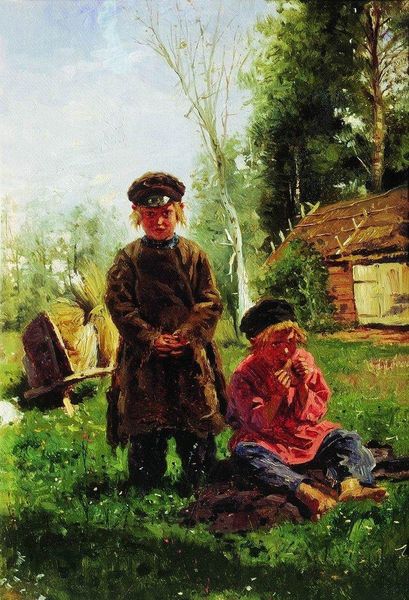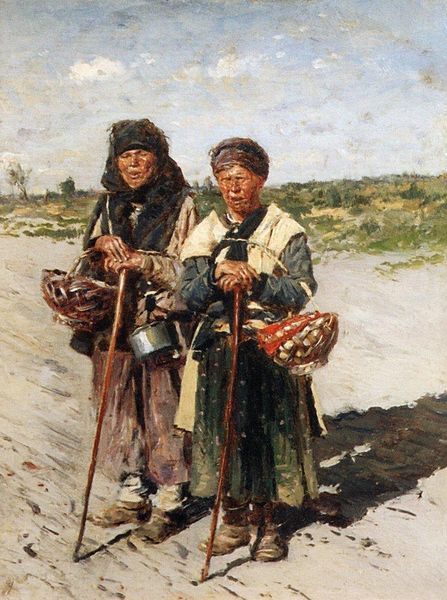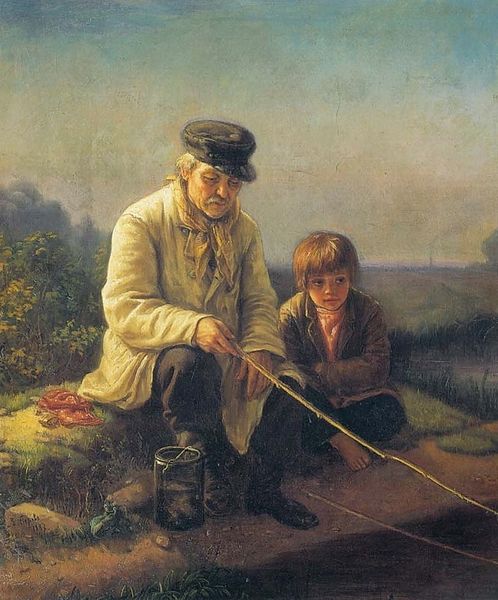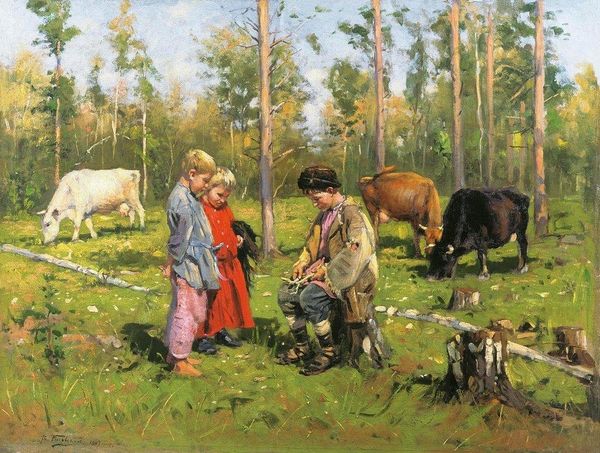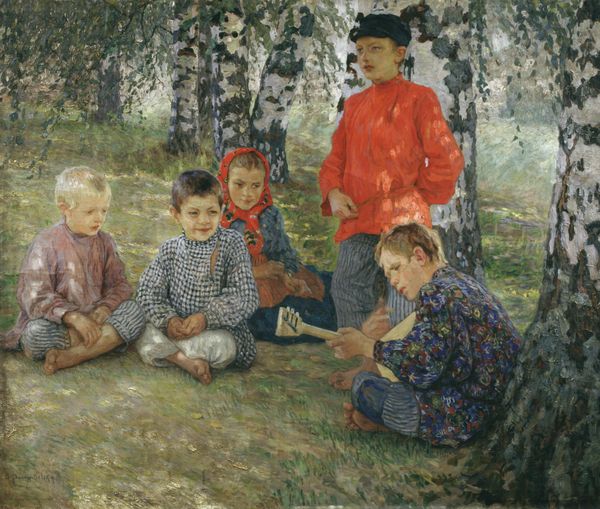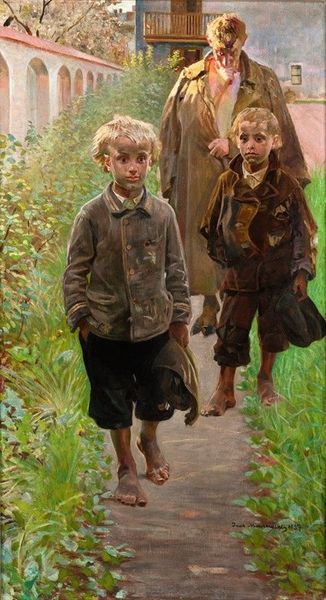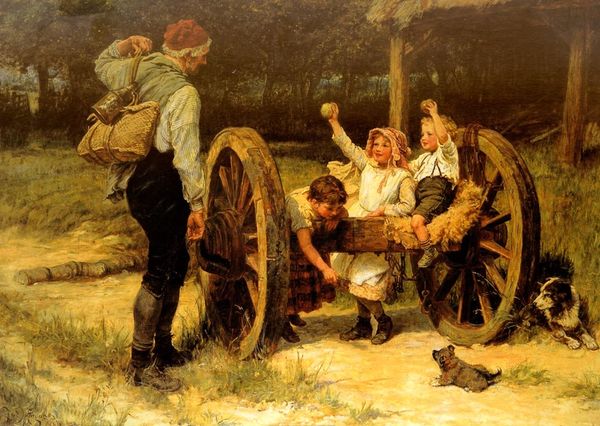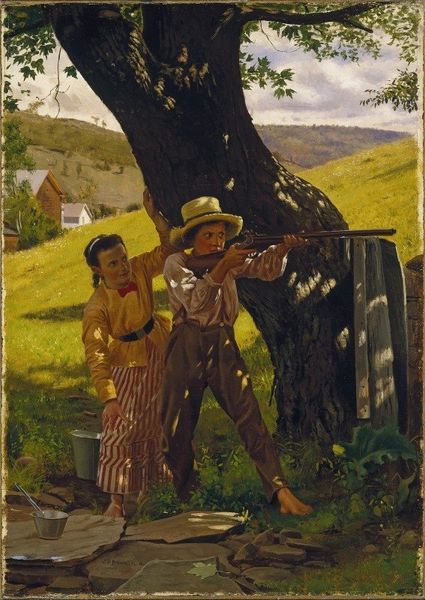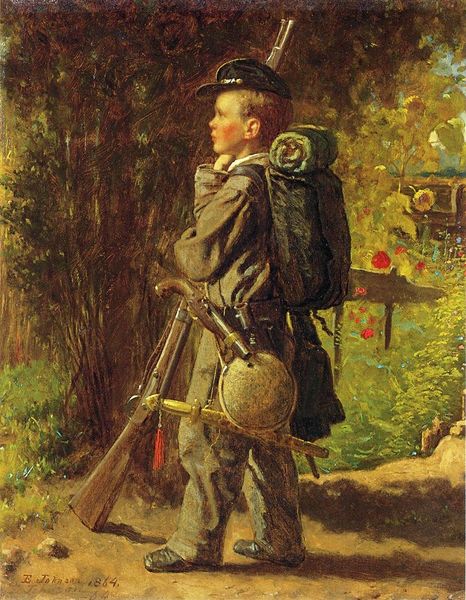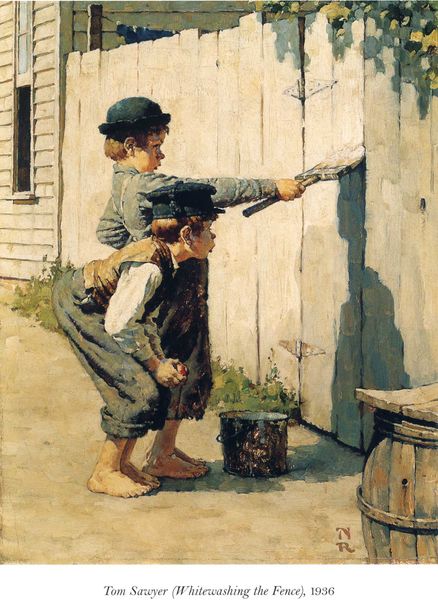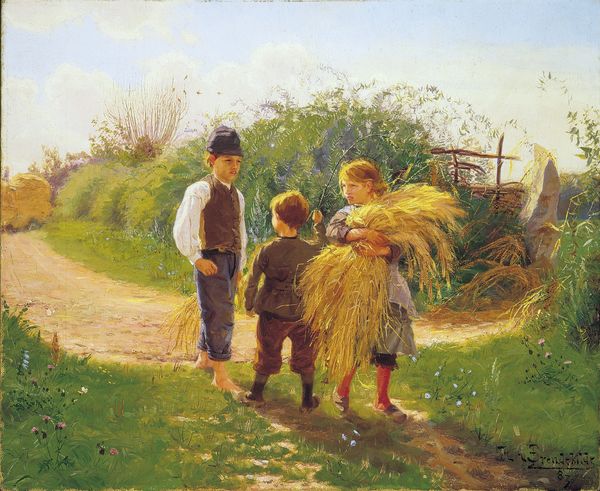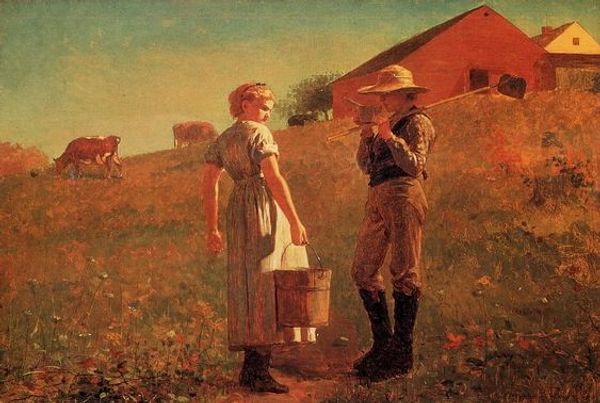
Copyright: Public domain
Curator: This is Nikolay Bogdanov-Belsky’s 1936 oil painting, "Country Boys." It depicts two young boys in a rural landscape. The texture of the wooden fence in the foreground seems remarkably tactile. Editor: My first thought is how pastoral and nostalgic it feels, a somewhat romanticized vision of rural childhood. There’s a serenity here, even with the implied hardship visible in their clothing. Curator: Indeed, the material realities are evident: the patched clothes, the bare feet. These details point to the economic conditions of the time, reminding us that rural life was often a struggle, a far cry from the romantic idyll. How much do you see the depiction of labor playing in this? Editor: It's subtly present, isn’t it? It’s less about backbreaking work and more about resourcefulness—mending their own clothes, for instance. I see an interesting dichotomy—a portrait of simple pleasures juxtaposed with the very visible signs of limited means. And, of course, consider how images of childhood like this are politically charged. This painting was created in the mid-1930's as Stalin tightened control of Soviet culture. Curator: That’s a crucial point. Focusing on materiality here, you notice that the application of oil paint creates a layered effect in the rendering of clothing and setting, almost giving the landscape an added element of craft. It connects, for me, with the way folk traditions were sometimes appropriated during the period. It underscores the constructedness of "peasant authenticity," while drawing attention to the technical means with which art conveys this idea. Editor: And to build on that, this idyllic representation serves a purpose. By focusing on the simplicity and perceived innocence of these children within a controlled rural environment, the artist presents a vision aligned with dominant ideologies. What's absent from this image is a visual consideration of power structures at the time. Curator: Absolutely. And thinking about the work today, we need to look closely at how these romanticized visions affect our understanding of past—and even present—social realities. Editor: Precisely. It reminds us to critically engage with any representation, no matter how seemingly benign. Curator: A valuable consideration of the means and context with which such nostalgic art like this asks viewers to remember it. Editor: Yes. Ultimately this dialogue encourages us to keep complicating such artwork with social reflection.
Comments
No comments
Be the first to comment and join the conversation on the ultimate creative platform.
